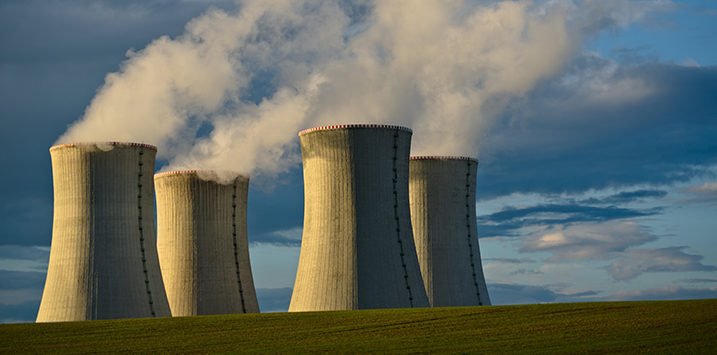
Investors going nuclear!
The broad acceptance of the Australian government’s decision to invest in nuclear powered submarines reflects a broader shift in thinking on the subject of nuclear power, its costs and benefits. Meanwhile the rest of the world is experiencing a nuclear power renaissance amid an energy crisis, fuelled by (pun intended) gas and coal shortages, particularly across Europe.
Indeed, power prices in Europe hit new records in 2021. In the UK, Germany, France and Spain power prices surged 200 per cent. In Lapland some countries experienced nearly 500 per cent price increases.
According to nuclear-fuel consulting firm UxC uranium prices rose 40 per cent in 2021 to over US$40/lb.
Globally, investment in nuclear is on the march. According to a report by independent energy research and business intelligence company Rystad Energy, more than US$90 billion will be spent in the next two years alone, and more spending will be necessary, as more than 50 new nuclear reactors are already under construction.
Around the world, 400 gigawatts of total installed nuclear power already exists, accounting for about 10 per cent of electricity generation. This has hardly grown since 2017 but as Asia increases its share of nuclear power generation, growth is expected to accelerate.
A nuclear power plant takes about five years to construct under normal conditions. With supply chain bottlenecks however, the time to completion extends, meaning serious additional capacity is time away. Several countries however have clearly defined plans to expand capacity.
China currently has 14 plants under construction, India 6, South Korea 4, UAE, Turkey and Russia each have three, while Japan, the UK, Bangladesh, the US and Slovakia each have two being built.
According to WIRED Magazine, the Hungarian government will increase its fleet of four nuclear reactors by 50 per cent, the Czech’s have plans to build two and Poland wants to build its first small modular reactor (SMR) to reduce its heavy reliance on coal.
Perhaps most importantly for ESG-aware investors, nuclear energy has been given the green light by 10-member states of the European Commission. Lead by France’s U-turn on its nuclear power policy, nuclear is being added – as soon as April – to the EU’s taxonomy of green energy, meaning billions will be directed to what is deemed reliable, carbon-free electricity generation.
By way of background, French President Emmanuel Macron refocused his government on nuclear energy last year, observing his country’s nuclear plants would also be a major driver in the production of hydrogen through electrolysis. Keep in mind the EU has a goal of net zero greenhouse gas emissions by 2050.
And while some countries, including Germany, push back on nuclear development – citing the dangers – Germany’s electricity prices surged last week as output from thousands of wind turbines plunged.
This nuclear re-investment theme is expected to continue to support, if not propel, uranium prices in coming years.
In France, US$1.1 billion will be spent on research into, and development, of SMR’s to replace at least some of the country’s existing nuclear infrastructure, which already supplies almost three quarters of France’s electricity. It is reported the UK is also investigating SMR’s with Rolls-Royce and is said to have invested US$290 million into their development. It is claimed a Rolls-Royce SMR can power nearly half a million homes.
Not to be outdone SMR technology is advancing in the US too. US utility operators including Energy Northwest and Warren Buffett/Berkshire Hathaway’s PacifiCorp have JV’d with manufacturers to produce SMR’s.
For years uranium production capacity has been declining. Consequently, according to Canadian investment bank, Scotiabank, the annual deficit of global uranium supply will average 23 million pounds through 2022, equivalent to about 13 per cent of global uranium demand.
And with production of nuclear reactors accelerating the supply deficit is not expected to ease.
Investors who investigate this theme can find exchange traded funds such as The North Shore Global Uranium Mining ETF (NYSE:URNM) which is constructed to track the performance of companies involved in uranium mining, exploration, development, and production, as well as companies holding physical uranium or other non-mining assets.
According to URNM the ETF holds Cameco Corp, National Atomic Company, Sprott Physical Uranium Trust, Yellow Cake PLC, Energy Fuels Inc, Uranium Energy Corp, Denison Mines, Corp, Padain Energy Ltd and Uranium Royalty Corp. The Fund’s net asset value (NAV) is up 48.07 per cent for the year to the end of February.
We of course cannot predict uranium prices or the performance of any company shares or ETFs, it is worth considering however whether uranium is part of the decarbonisation theme currently also driving lithium investment.